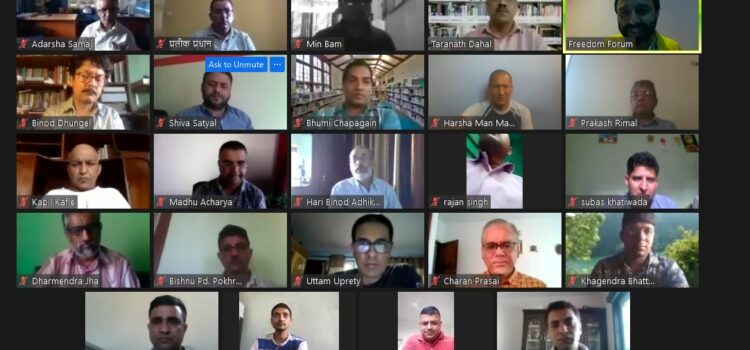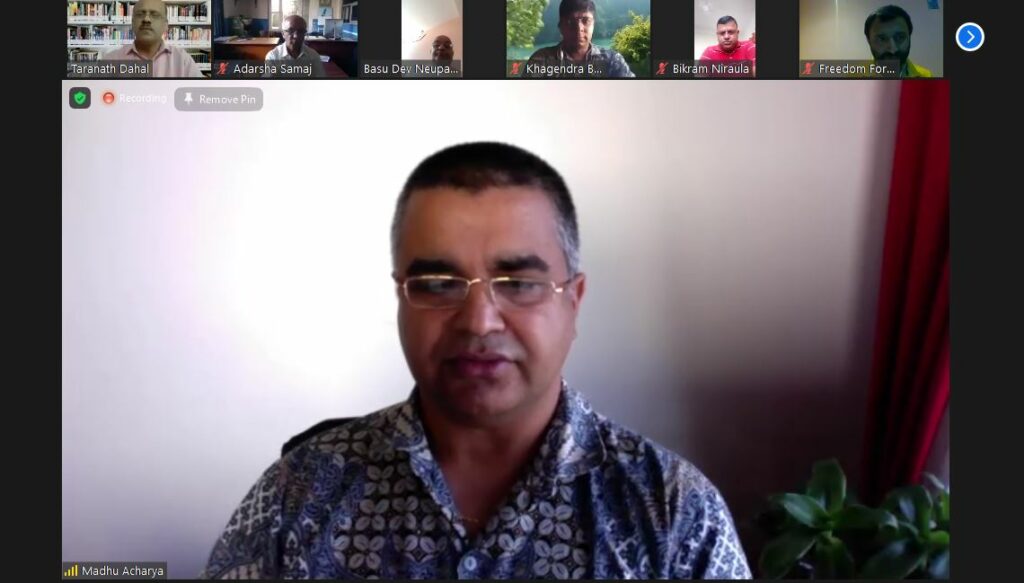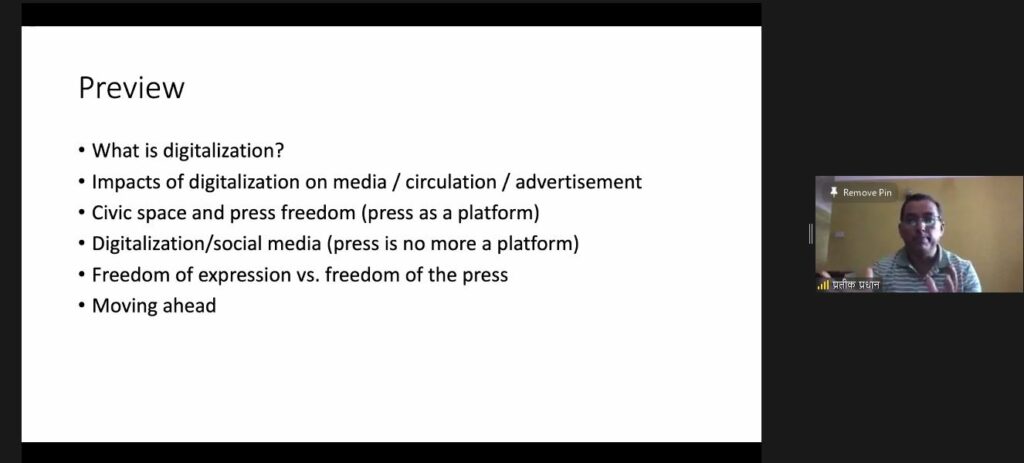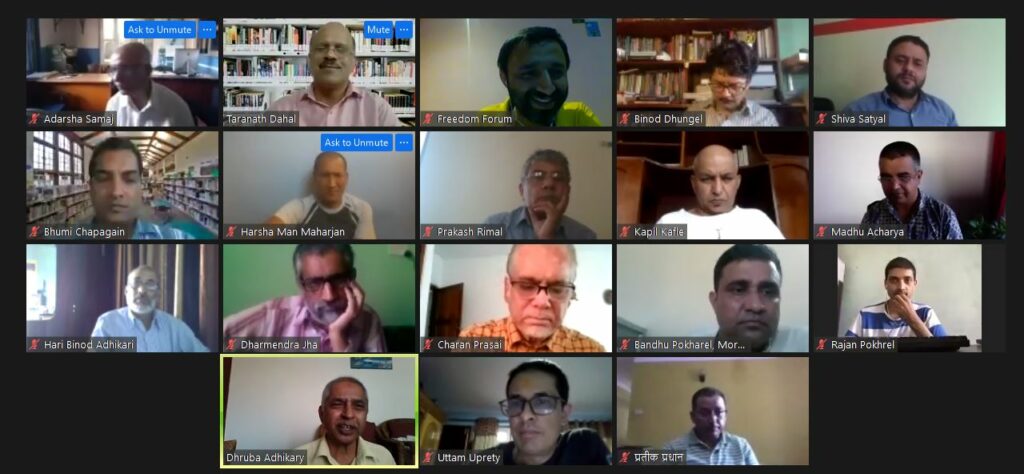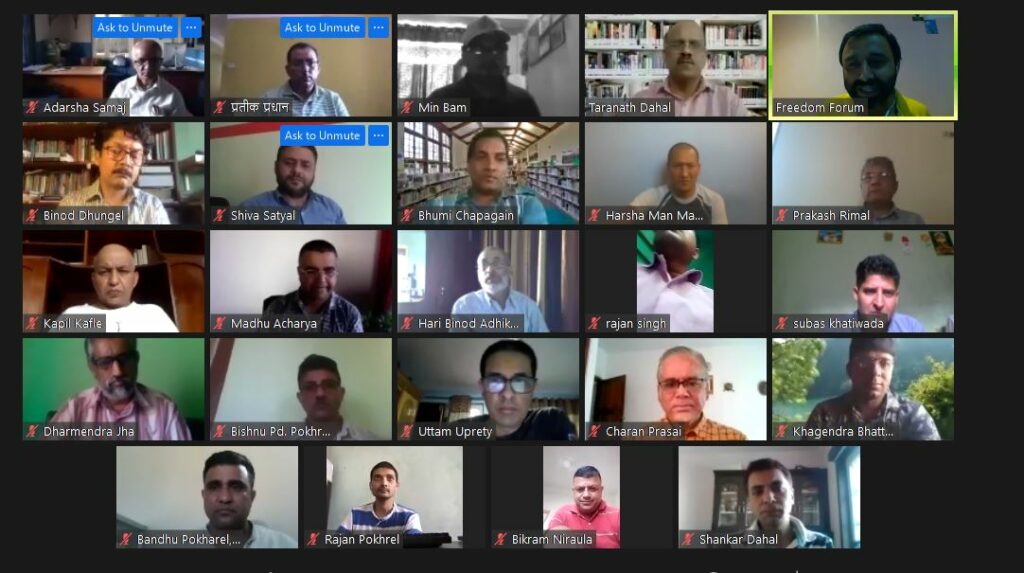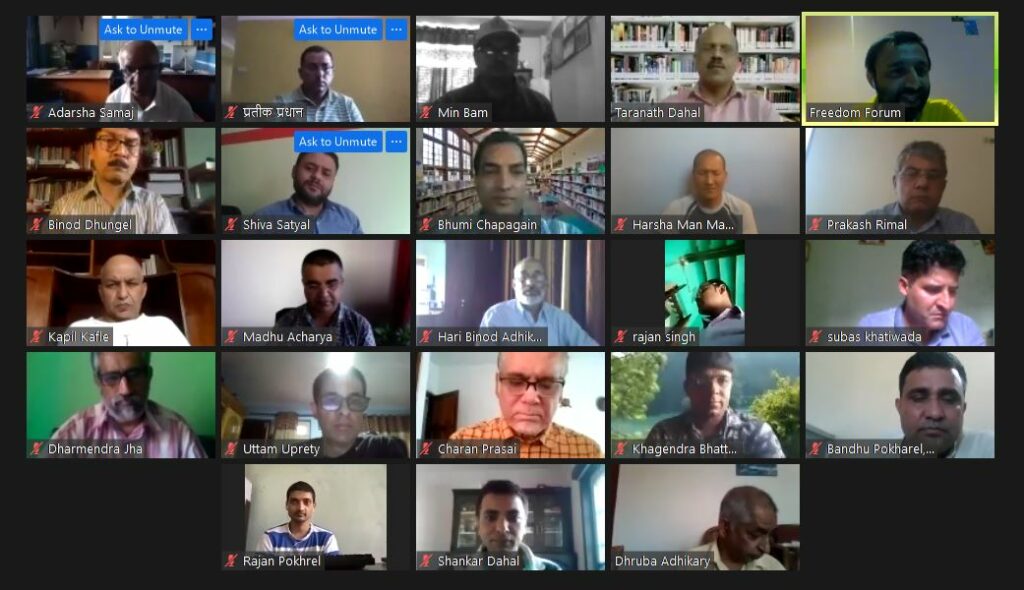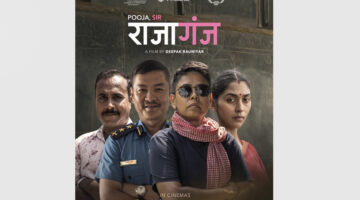Increasing penetration of the internet and proliferation of mobile devices have been transforming the media industry into digitalization. According to NTA, mobile phone penetration in Nepal has exceeded 100% while internet penetration crossed 70 % of population. With this, the traditional media are joined the bandwagon of digital world.
Lately, Covid-19 crisis pushed further the legacy media to adopt technological sphere, the digital sphere, for their visibility and sustainability. In this context, Freedom Forum organized a dialogue on “Digitalization of Media and Civic Space in Nepal” on October 16. The main objective of this event was to discuss the shift of the traditional media to digital media and its impact on the future media landscape, public opinion, civic space and fundamental freedoms. The participants ranged from media professionals, CSOs working for media and information, academia and the researchers.
CEO at Sharecast Initiative, Madhu Acharya, shared the survey data about media, media consumers, trends of using media content and audience trust in Nepal. The increasing growth and advancement of information technology have changed the media consumption pattern of the audience. A recent survey showed that the biggest number of audiences relied on internet-based platforms along with social media for local, national and international news. However, the level of trust of the audience on internet-based media is very low compared to traditional media. According to him, the data of internet users and media outlets are easily obtained nowadays. It will be helpful to forecast future media landscape and digital civic space. Flooded online news portals are just begun as digital walls rather than a comprehensive news platform.
Editor at Barhakhari.com, Prateek Pradhan, opined that digitalization allows interactive news on digital space which however was developing at a slow pace in Nepal. Covid-19 has contributed to decline of print media but not helped online, he argued, adding that the advertisements have shifted not to online news portals but to social media and Google.
According to him, civic space seemingly expanded with digitalization and with the advent of social media. Every individual is empowered with use of smart phone and internet. The anarchy of information, misinformation/disinformation, and loss of credibility are the major reflection of in the technological development.
Senior journalist Dhurba Adhikari viewed the digitalization of media outlets obviously helps to empower citizen. However, digital literacy and skills are imperative for one’s meaningful access to the internet-based media, which, he said, would influence digital public space. Digital platforms could be used to create civic space for the voiceless.
Former editor at Himalayan Television Binod Dhungel said that digitalization of media is the need of the time and Covid- 19 intensified it. Future of traditional media is in crisis because of rapid growth of internet based media, he said, adding that it is hard to distinguish mainstream and other media. Credibility of online media platform is in question.
Editor of the Sikshyak magazine and senior journalist Rajendra Dahal stressed that the problem lies in journalism practice not in the media outlets and its form. He wondered how the contents in digital media could be regulated.
Former president of Online Journalist Association Prabesh Subedi said the revenue model is the major drivers of digital news industry that can be sustained with different modality –aggregated subscription based, separate subscription based etc. He gave the examples of the Guardian, New-York Times and others. Subscription users are increasing day by day which can generate required revenue for online platform. This model may also fit Nepali context in future.
Editor at Nepal Samacharpatra daily Kapil Kafle wishes he was in the generation where he too could increase followers in mainstream media which is now declining. Public space is expanding via social media and internet platform.
A journalist participating from Britain, Bhagirath Yogi, viewed Covid-19 forcefully pushed the traditional media towards digital platforms. However, there is no convincing model of revenue generation to sustain digital media yet. In the present crisis, only government media and PSB are continuing their fullest presence. So, we must focus on Public Service Broadcasting adopting digital mode for assuring better civic space.
Human rights activist Charan Prasai expressed his worries about ongoing information and media anarchy in digital platform along with flood of misinformation that could be translated into the control-oriented media governance.
President of ACORAB Subash Khatiwada opined that the changing media means, modality and news variation is the reflection of time. Mere huge number of media consumption does not guaranty the trust. In such a crisis, community media has bigger role.
Media researcher Harshaman Maharjan said digitalization of media and other social media platform widen the scope of readers to put forth their concern.
Concluding the event, General Secretary at FF Dharmendra Jha believed that this discussion was timely. Digital media has great scope with certain limitation and challenges, he said, adding that data manipulation in various contents of online media platforms declines credibility in the news media.
The discussion, moderated by Taranath Dahal and Sanjeeb Ghimire, was attended by 45 participants. Out of 45 participants, there were 5 females in the event.

